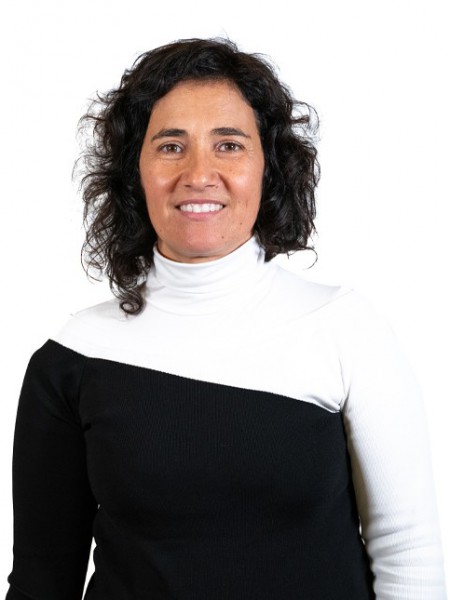abstract
Nanopatterned porous thin films of bismuth ferrite (BiFeO3) with porosity perpendicular to the plane are prepared by an evaporation-induced self-assembly methodology using nitrate metal salts and a commercial block copolymer as a structure-directing agent. The sol-gel based method is successfully used to achieve crystalline nanopatterned porous BiFeO3 layers with 66 nm thickness and an average pore diameter of 100 nm after treatment at 600 degrees C. The large vertical porosity markedly enhances the nanoscale electric properties when compared to the dense counterparts. The porosity orients the piezoelectric domains and reduces the energy necessary to reorient the dipoles. The induced instability in the dipole-dipole interactions results in an increase of the effective piezoelectric coefficient. The porous structure also has a positive effect on the magnetic characteristics of the system, displaying a larger ferromagnetic component relative to the dense thin film counterparts. Thus, the vertical nanoporosity may have a broad impact in applications of ferroelectric and multiferroic thin films. Moreover, the nanoporosity may be used for further functionalization, aiming at the improvement of the weak ferromagnetic properties of BiFeO3 at room temperature and the enhancement of the magnetoelectric coupling. We may add that the nanoporosity is important for photocatalytic applications conjugating a low direct band gap (2.58 eV) and an extended porous area (ca. 57%), as well. Our observations though related to BiFeO3 can be extended to other ferroic systems and have a marked effect on the extended use of ferroic thin films with optimized properties for actuator, sensor and memory applications.
keywords
BEHAVIOR; PIEZO
subject category
Materials Science; Physics
authors
Castro, A; Martins, MA; Ferreira, LP; Godinho, M; Vilarinho, PM; Ferreira, P
our authors
acknowledgements
This work was developed within the scope of the project CICECO-Aveiro Institute of Materials (FCT Ref. UID/CTM/50011/2019), FLEXIDEVICE (PTDC/CTM/CTM/29671/2017) and Smart Green Homes Project (POCI-01-0247-FEDER-007678) financed by national funds through the FCT/MCTES and when appropriate co-financed by FEDER under the PT2020 Partnership Agreement. AC, MAM and PF are grateful to FCT and POPH/FSE, respectively, for doctoral, post-doctoral and coordinator investigator FCT fellowships (SFRH/BD/67121/2009, SFRH/BPD/89563/2012 and IF/00300/2015-NANOTRONICS). This work was also supported by the center grant BioISI, (Ref. UID/MULTI/04046/2019) from FCT/MCTES/PIDDAC, Portugal.



